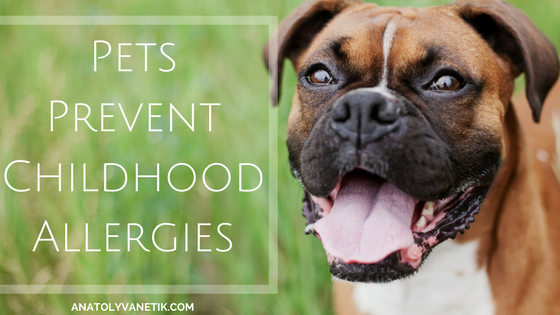Childhood allergies can develop at an early age. Parents are cautious of what they feed to their children, and also what they bring their children near. Recent studies have found that any infant can develop allergies when their body is exposed to anything their immune system deems as “foreign” which causes the reaction. Although allergies can develop in early stages or later in life, studies have shown that a pet such as a cat or dog in an infant’s life can prevent their allergy later on.
Researchers say that having a cat or dog in the home during the first year of an infant’s life can prevent or reduce allergies they may develop as they grow older. Although most parents are concerned about children developing allergies to pets because of their young immune systems, it’s actually contrary. Pets can reduce childhood allergies.
In some cases, pet allergies will prevail. People can develop allergies to a dog or cat’s hair, dander, skin, saliva or even their urine. Dogs who shed the least give off the least dander. Certain dogs actually have the same type of hair as humans which is why they’re considered “hypoallergenic”.
Sometimes, people assume because they have allergy symptoms that they’re allergic to their pet. However, it could simply be the dust mites. Dust mites are microscopic so you can’t see them but you can almost guarantee that they’re there. They like to hide in fabrics such as curtains, carpets, bedding and especially where your dog or cat sleep. Instead of getting rid of your pet because you think you’re allergic, try preventing dust mites as your first option.
Children who grow up with a cat or dog are almost 50% less likely to develop allergies later down the road. Because their bodies are welcoming the cat or dog, their immune system is less likely to have an allergic reaction.
If you’re concerned about exposing your infant to pets and still not convinced, here are a few pet allergy preventive strategies:
- Keep your pets out of the bedrooms
- Take your pets outside to play
- Wash your hands after you pet your cat or dog
- Don’t touch your eyes after playing with your pets
- Replace your carpets with hardwood flooring
Although researchers can’t guarantee your child won’t develop allergies being brought into a home with a cat or dog, they can tell you that timing is everything. The earlier your child has a dog or cat, the less likely they are to develop allergies as they grow.
